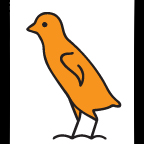Hello!
I find this activity very useful when teaching about varied shadow lengths and their positions during different times of the day.
What I like best about this activity is that I can integrate Art skills with Science (Light and Shadow) and Math (Measurement and Time).
You will need:
- some tin-foil sheet
- 1/4th of a KG card sheet (any colour)
- glue
- colour pencils/felt pens
- a ruler
- a pair of scissors
I find this YouTube video very useful for making the tin-foil figure. It demonstrates the steps very clearly.
https://youtu.be/eDOOqdm_9jc
Ask your class to make a tin-foil figure for themselves. You could do it with them in class or play the above video in your class and ask them to follow it step by step.
It is important that they stick their puppets in the centre of the KG card sheet. This will ensure they have enough space to outline the shadows.
Now, take them to the playground or any open area at three different times of the day: morning, noon and later in the afternoon.
Ask them to observe the shadows carefully and outline them using 3 different colour pencils, They should then measure the shadows using a ruler and write the measurements and time beside the respective outlines.
Students will see that the shadows formed due to sunlight have different lengths and positions.
I too did the activity at home. I hope you find the images useful.
Shadow in the morning:
Time : 9:30 am.
Length : 12 cm
Position of the shadow: in front of the figure
Shadow at noon:
Time : 12:30 pm.
Length : 5.5 cm
Position of the shadow: under the figure

Shadow in the evening:
Time : 4:00 pm.
Length : 14 cm
Position of the shadow: behind the figure
To sum up:
The shadows are longer in the morning and evening; whereas, they are shortest at noon as the sun is overhead.
Now, take them to the playground or any open area at three different times of the day: morning, noon and later in the afternoon.
Ask them to observe the shadows carefully and outline them using 3 different colour pencils, They should then measure the shadows using a ruler and write the measurements and time beside the respective outlines.
Students will see that the shadows formed due to sunlight have different lengths and positions.
I too did the activity at home. I hope you find the images useful.
Shadow in the morning:
Time : 9:30 am.
Length : 12 cm
Position of the shadow: in front of the figure
Shadow at noon:
Time : 12:30 pm.
Length : 5.5 cm
Position of the shadow: under the figure

Shadow in the evening:
Time : 4:00 pm.
Length : 14 cm
Position of the shadow: behind the figure
To sum up:
The shadows are longer in the morning and evening; whereas, they are shortest at noon as the sun is overhead.




















